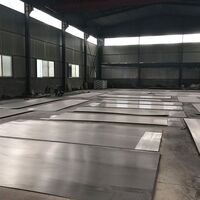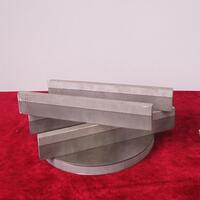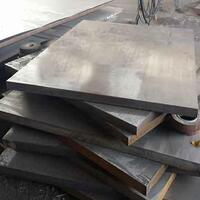1. Introduction
If you’ve ever walked past a sleek modern building with a rust-colored wall that looks like it’s been kissed by time—or admired a shiny copper roof that glows like liquid gold—you’ve encountered metal clad. But ‘metal clad’ isn’t just one thing. It’s a whole universe of materials, methods, and meanings wrapped around steel, aluminum, zinc, and more. From the corrugated charm of a metal shed to the high-tech elegance of a titanium-clad skyscraper, this term covers everything that’s layered, bonded, or wrapped in metal for performance, protection, or pure panache.

So, what exactly is metal clad? And why does your architect keep whispering ‘corten steel siding cost’ like it’s a secret code? Buckle up—we’re peeling back the layers (literally).
2. What Does ‘Metal Clad’ Actually Mean?
2.1. Clad Metal Meaning vs. Metal Clad Meaning
Let’s clear the fog: ‘clad metal meaning’ and ‘metal clad meaning’ are two sides of the same shiny coin. In engineering and construction, ‘clad metals’ refer to composite materials where a base metal (like carbon steel) is bonded with a corrosion-resistant layer (like stainless steel or nickel). This isn’t paint—it’s metallurgical marriage. Think aluminum clad stainless steel or stainless clad aluminum: two metals fused for strength and resistance.
Meanwhile, in architecture, ‘metal clad’ usually describes exterior finishes—like a metal clad wall or metal clad roof—that wrap a structure in metal panels for weather resistance, aesthetics, or both. So yes, your steel clad house isn’t wearing armor; it’s just very fashionably protected.
2.2. The Many Faces of Metal Clad
Metal clad isn’t picky. It shows up as:
- Metal clad siding (corrugated, standing seam, or vertical)
- Metal clad electrical wire (armored for safety in commercial buildings)
- Metal clad insulation (like aluminum clad pipe insulation for HVAC systems)
- Even metal clad wire for electronics (cu clad wire, anyone?)

Each type serves a purpose, and confusing them is like using a diamond plate steel sheet as a pizza peel—technically possible, but wildly inadvisable.
3. Architectural Metal Clad: Where Beauty Meets Brute Strength
3.1. Facades That Turn Heads (and Withstand Hurricanes)
Modern architecture loves a good metal facade. Why? Because it’s durable, low-maintenance, and Instagrammable. Popular options include:
- Corten steel facade: That iconic rust patina isn’t decay—it’s controlled oxidation. Corten steel plate develops a stable rust layer that protects the core. Corten siding cost? Higher upfront, but lower lifetime maintenance.
- Zinc facade: Self-healing, elegant, and ages to a soft gray. A zinc clad dormer or zinc clad roof whispers ‘European chic.’
- Copper siding: Expensive but timeless. Turns green over decades—like the Statue of Liberty’s glow-up.
- Corrugated steel facade: Industrial charm meets affordability. Often seen on metal clad buildings from Brooklyn lofts to Aussie sheds.
And let’s not forget standing seam systems—like colorbond standing seam or pac clad standing seam roof—that offer clean lines and superior water resistance. Pair them with pac clad coping or pac clad column covers, and you’ve got a building dressed for the red carpet.
3.2. Siding Showdown: Standing Seam vs. Corrugated

Vertical standing seam metal siding offers sleek minimalism and excellent thermal performance—ideal for a steel clad house aiming for LEED points. Exterior corrugated metal siding, meanwhile, delivers rugged nostalgia and is easier to install on a budget metal clad shed.
Both beat traditional wood ‘metal weatherboard’ in durability, but standing seam wins for modern aesthetics and wind uplift resistance. Just don’t expect either to muffle your neighbor’s karaoke night—metal doesn’t absorb sound like wood or stucco.
4. Industrial & Electrical Metal Clad: The Unsung Heroes
4.1. Clad Steel and Alloy Clad: Tougher Than Your Gym Buddy
In heavy industry, clad steel saves millions by combining cheap structural steel with a thin layer of expensive corrosion-resistant alloy. Examples include stainless clad aluminum for chemical tanks or titanium clad plates for desalination plants. Even niche combos like 2024 T3 clad or 7075 T6 clad aluminum serve aerospace needs.
Alloy clad systems—like copper nickel clad or cupro nickel clad—are common in marine environments. And don’t overlook overlays: inconel 625 weld overlay or chrome carbide overlay can turn a mild steel plate into a wear-resistant warrior.
4.2. Metal Clad Wiring: Not Just for Electricians with a Death Wish
Metal clad electrical wire (often called MC cable) features insulated conductors wrapped in an interlocked aluminum or steel armor. It’s legal in Pennsylvania commercial buildings (yes, really), can be surface-mounted, and doesn’t always need conduit. But no, your 10/2 metal clad cable won’t handle 50 amps—check ampacity charts first!
Fun fact: Aluminum clad steel wire and aluminum clad wire are also used in telecom and grounding, proving that metal clad isn’t just about looks—it’s about function, safety, and not frying your toaster.
5. Material Matters: Steel Plates, Checker Plates, and the Quest for the Perfect Clad
Behind every metal clad wall is a humble steel plate. Whether it’s 1/8 inch steel plate for light framing or thick steel plate for bridges, the base matters. Add finishes like zinc coated, electroplating, or electroless nickel, and you’ve got tailored performance.
Need grip? Diamond plate steel or aluminum diamond tread plate adds traction. Want engraving? Brass plates for engraving or stainless steel nameplates deliver. And if you’re sourcing locally, you’ve probably Googled ‘steel plate near me’ more than once.
Pro tip: Stainless steel plate grades (like 316L or 904L) dictate corrosion resistance. Pair the right plate with the right cladding, and your metal clad building won’t just survive—it’ll thrive.
6. Conclusion
Metal clad is far more than a buzzword—it’s a spectrum of innovation spanning architecture, engineering, and electrical systems. Whether you’re choosing corten steel siding for its raw beauty, specifying aluminum clad stainless steel for a reactor vessel, or running metal clad wire through a commercial wall, understanding the nuances saves money, time, and embarrassing mix-ups (looking at you, gold-coated brass plate in a boiler room). So next time someone asks, ‘What is metal clad?’—smile, hand them this article, and say, ‘It’s complicated… but gorgeous.’
Our Website founded on October 17, 2012, is a high-tech enterprise committed to the research and development, production, processing, sales and technical services of ceramic relative materials such as Metal. Our products includes but not limited to Boron Carbide Ceramic Products, Boron Nitride Ceramic Products, Silicon Carbide Ceramic Products, Silicon Nitride Ceramic Products, Zirconium Dioxide Ceramic Products, etc. If you are interested, please feel free to contact us.
